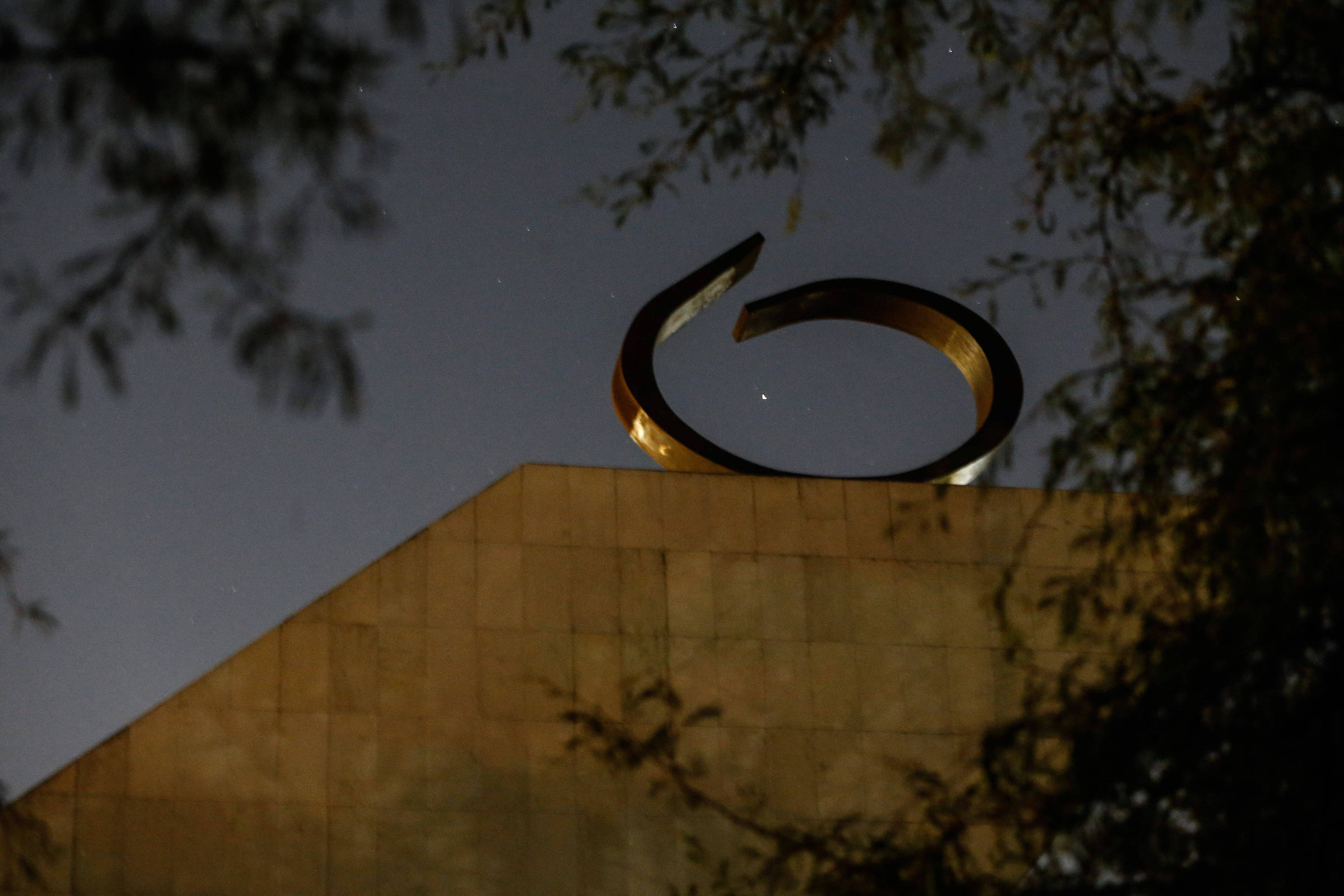Acadêmico de Medicina Veterinária 🇧🇷 | Capinzal - SC 🐧 Crente no desktop #Linux e software livre 🏳️🌈 Levanta Gay Bora Trabalhar
Mastodon: https://mastodon.social/@tarcisio_surdi
- 6 Posts
- 48 Comments
opa, modero a c/jogos_de_ritmo. Tentei entrar na sala mas acredito que precise da sua aprovação.
Além disso, tive que remover o “chat” no endereço e deixar apenas “moderadores@lemmy.eco.br” para encontrar a sala!

 5·21 days ago
5·21 days agovamos treinar IA pra forjar conteúdo sem escrutínio nenhum, não ter um sistema pra identificar esse conteúdo por aí e disponibilizar pra qqr um usar, tenho ctza q vai dar certo!!!
Eles deixam de indexar o site nos resultados de buscas a partir disso? Não seria um problema se essa desgraça não fosse um monopólio…
Se você não corre o risco de alguém ter acesso físico à sua máquina e rodar algo que possa comprometer sua sequência de boot (sejamos honestos, a maioria de nós não corre) ele mais atrapalha do que ajuda, na minha experiência.

 5·2 months ago
5·2 months agoIf only we had a fix for the crazy performance discrepancy that pops up when running DX12 + RTX titles!

 2·3 months ago
2·3 months agodoes WoW run on linux??
saudades de ter comunidades estilo o que estão fazendo com algumas hashtags semanais no Mastodon a estilo de #segundaFicha, #terçosoftware / #tercinema, #quartacapa, #musiquinta e #sextaserie
Comunidade voltadas para falar sobre um assunto específico e dar sugestões de conteúdo pra consumir

 2·3 months ago
2·3 months agoYes, at least that’s what was on OP’s system

 9·3 months ago
9·3 months agoWill the Gnome version of Bazzite work for HDR on an Nvidia GPU, or for that matter any other OS as long as I’m using gamescope to run the game with HDR enabled?
I don’t think it would work because of the fact that HDR isn’t properly implemented yet on GNOME, still waiting for that to land in 47…

 5·3 months ago
5·3 months agoI suffer from having to update the firmware of my Xbox controllers through a Windows Laptop we use for office work (using LibreOffice, btw) because they will stop working on my Fedora Linux machine after some time when I update the kernel modules for
xoneandxpadneo.It’s interesting to me that you can do that using a VM!!

 2·3 months ago
2·3 months agoOMG nice build! I’m waiting on RDNA4 to finally upgrade my setup to AM5 and by then I hope we already have the X3D variants of the 9000 series from AMD too, but daily driving my RTX 2060 6GB in 2024 on both Windows and Linux has been quite the painful experience…

 2·3 months ago
2·3 months agoWow that’s crazy, did she read the book even after that major spoiler you didn’t know you were giving her?
I’ll be so excited if I actually win this and get to play it with my boyfriend, sounds like such a good time :)

 21·3 months ago
21·3 months agoNo idea what in the DNS happened there, that’s not the link I shared.

 152·3 months ago
152·3 months agoI accessed the site under a VPN, maybe that’s why it didn’t let me read it as “I had reached their limit” and it was definitely paywalled.

 24·3 months ago
24·3 months agoWell, that’s the article where this specific headline is used…
Anyway, here’s the same story without a paywall (that has been posted after I shared this): “Chama eterna” da democracia está apagada para manutenção

 3·3 months ago
3·3 months agoDoesn’t matter if you know what it means, but you can still pronounce it (for the most part)
That’s the beauty of the added gramatical complexity these languages have compared to English, although there are still cases where things get ambiguous. For example, the following words are written differently but pronounced the exact same, generally relying on their context to differentiate them:
- sela/cela;
- censo/senso;
- assento/acento;
- cozer/coser;
- concerto/conserto;
- tacha/taxa;
I’ve always been told that Portuguese is like “Spanish and French had a baby”.
Having studied Spanish, French and English I can confirm that those similarities are definitely present!
My wife and I were in a cab with a native Portuguese speaker who knew a bit of English and a bit of Romantic languages. My wife knows a bit of French; I know a bit of Spanish… and between the three of us, we were able to speak to each other in a kinda “creole type” delivery. It was really cool to experience.
What an interesting story! Where I live there are a lot of Haitian immigrants and communicating with them also involves that “creole type” language. In comparison talking to Cuban / Venezuelan immigrants is made much easier due to the similarities with Spanish. Regardless, the fact you can have a basic talk with an entire continent because of this is so cool.
Lastly, I have to ask… do you think “bradypneic” would be pronounced “BRAY-DIP” or “BRA-DIP” in English?
Definitely the second pronunciation (“BRA-DIP”) is the correct one!

 6·3 months ago
6·3 months agoEnglish fails hard at conveying phonetics through written language. In Brazilian portuguese (my native language) those words would be written as:
- parenquimal (from “parênquima”);
- taquipnéico;
- bradipnéico;
The lack of diacritics (and several other characteristics) makes English really easy to learn but in contrast you get those kinds of problems. I’ve never seen anyone get those words wrong in my field (I’m a vet)

 2·3 months ago
2·3 months agoOver the last year I’ve been dating a potterhead and I never read/watched the whole series (due to generally disliking fictional books and not really watching movies). However, I love video games and feel like playing Hogwarts Legacy would allow me to know the universe of HP a little better while also being more connected with my boyfriend’s interests - we could also play it together!

 2·3 months ago
2·3 months agoPerdão, não tinha visto que se tratava de um notebook. Não se preocupe em não ter tanta familiaridade assim com o assunto, qualquer dúvida só pedir!
Dei uma olhada nas instruções do Debian e o processo é bastante similar a aquilo que eu faço no Fedora. O driver da NVIDIA no Linux trabalha em conjunto com o seu próprio “módulo de kernel”. Por conta da sua natureza proprietária este não pode ser incluso junto ao kernel como fazem outras fabricantes (Intel, AMD…) e precisa ser carregado através desse sistema modular. Logo, depois de instalar o pacote proprietário no seu sistema é preciso esperar até que o módulo seja compilado, o que acontece em plano de fundo, você só precisa esperar pra reiniciar. Entretanto, o kernel não deixa que você carregue qualquer módulo durante a inicialização do computador devido ao alto nível de privilégio envolvido em executar código nessa camada. Portanto, os módulos devem ser assinados digitalmente de duas formas, ambas mantendo o Secure Boot ativado:
- Assinar os módulos manualmente - você quem maneja as chaves de criptografia, precisa repetir toda vez que atualizar o driver ou kernel;
- Cadastrar sua MOK (Machine Owner Key) em sua BIOS/UEFI e configurar o
dkmspara usá-la - automático;
Ou você pode simplesmente desabilitar o Secure Boot, o que é bem mais fácil e não te expõe a grandes riscos de segurança (a menos que tenham acesso físico a sua máquina e você não criptografe seus discos).
No seu caso eu recomendaria:
- Desabilitar o Secure Boot na sua UEFI;
- Seguir as instruções do Debian 12 no link da wiki (dois comandos);
- Esperar até a compilação dos módulos de kernel, 3 a 5 minutos e reiniciar o PC.
Deve funcionar, qualquer dúvida fique à vontade pra questionar!






Pois então, preciso focar o desenvolvimento apenas em um serviço de sistema que converse com o
dkmse exponha uma API no DBus, dessa forma funcionaria com o Flatpak (e também com outros formatos), pensando em manutenção disso no futuro…Em conversa com o pessoal do GNOME Brasil no Matrix, me apontaram para essa biblioteca que parece facilitar bastante o desenvolvimento do serviço, só agora eu tenho que saber quais métodos implementar e como usar essa biblioteca kkkkkkkk
EDIT: mas sim, se eu tivesse acesso ao
pkexecseria muito mais simples executar os comandos como subprocessos…